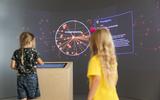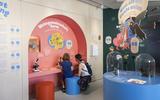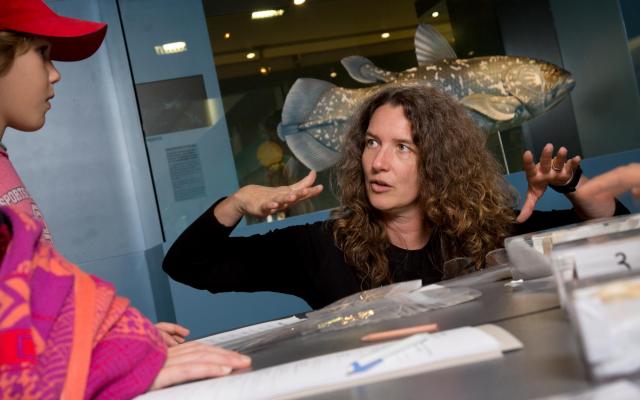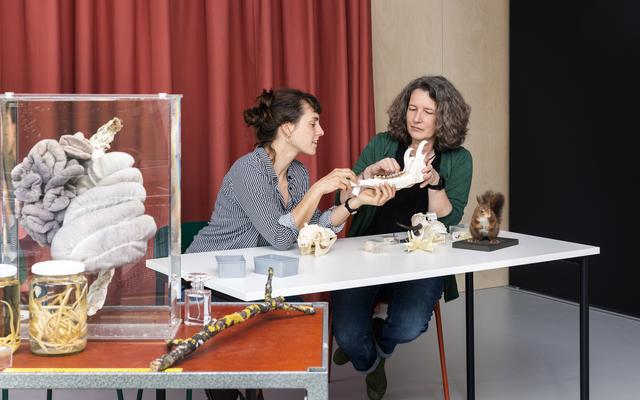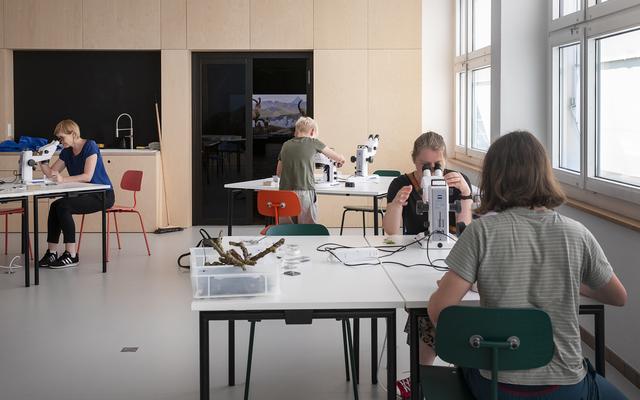Every organism employs different strategies to survive and protect its offspring. Each one is connected to others and is part of a highly complex and often sensitive ecosystem. Visitors can discover for themselves what this means: looking through the microscope at lichens, for example, reveals that the cooperation (symbiosis) between fungi and algae produces completely new organisms. It soon becomes clear that fungi are much more exciting than many people might suppose – their symbiosis with plants is a widespread phenomenon and forms the basis for functioning systems. At digital stations, visitors discover different habitats and get to alter them by making calculated changes. In exploration mode, they can delve even deeper, discovering who is related to whom and how. This reveals how even ostensibly minor interventions in nature can have a negative impact on the overall system, and vice versa: even tiny adjustments have the potential to achieve positive effects.
Visitors have myriad opportunities to get hands-on: at one digital station, for instance, they can select an animal or plant card, customise it and scan it to enter and explore habitats. In a fun and creative way, this station illustrates the diversity of the relationships between individual species and what happens to them when their habitats are altered. It also illustrates how nature does not make any value judgements, or distinguish between ‘useful’ and ‘useless’.
One area of the colourful and carefully designed exhibition is dedicated to the intestines and shows how dependent humans are on the countless other organisms that live in their intestines. Our gut is the habitat for a wide variety of vital bacteria and fungi, which form part of a diverse network of relationships. The centrepiece of this exhibition area is the preserved specimen of a real intestine.
